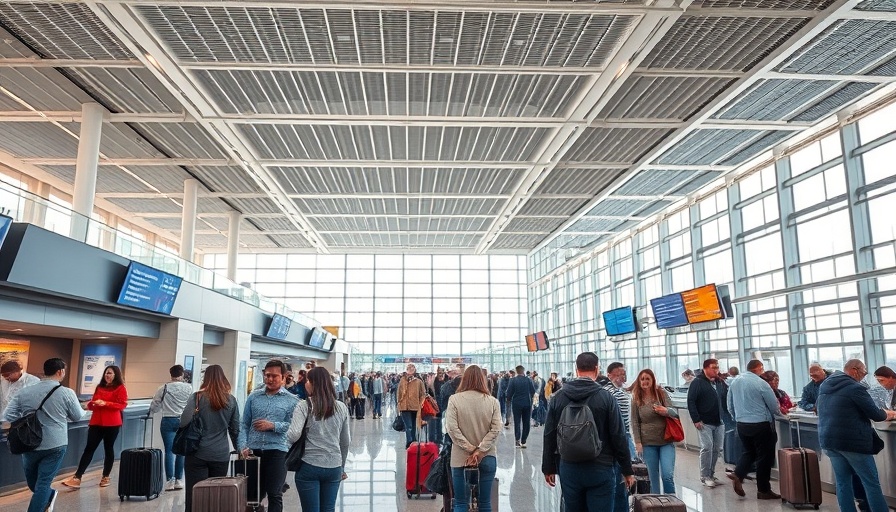
Canada’s Airspace on Alert: A Series of Bomb Threats
On July 3, 2025, Canada’s airspace faced a significant security concern with multiple bomb threats reported at major airports across the country. Cities affected included Ottawa, Montreal, Edmonton, Winnipeg, Calgary, and Vancouver. The incidents led to immediate flight delays and passenger evacuations, creating chaos in what is typically a bustling travel environment.
Understanding the Response to Bomb Threats
In response to these unfolding events, NAV Canada, the organization responsible for air traffic control, implemented a temporary ground stop at the implicated airports. Their commitment to passenger and staff safety was evident as they coordinated closely with local authorities. As experts suggest, such threats, regardless of their legitimacy, demand swift action to ensure security. In this scenario, resourcefulness and quick decision-making were crucial.
The Psychological Impact of Bomb Threats on Air Travel
Bomb threats, even when not executed, can profoundly affect public perception and behavior regarding air travel. Psychological research indicates that such incidents can cause widespread fear and anxiety among travelers. For individuals already apprehensive about flying, these threats can serve to heighten their fears. This could result in a decline in air travel attendance, forcing an urgent need for airlines and government bodies to implement comprehensive crisis communication strategies.
Historical Context of Air Travel Security in Canada
Canada has experienced numerous security incidents in its aviation history, prompting stringent regulations and preventative measures. Notably, the aftermath of the 9/11 attacks reshaped global flight security protocols. Canadian authorities have learned from the past, continuously updating security measures to reflect the evolving threat landscape. However, this recent series of threats shows that the threat is ever-present, necessitating ongoing vigilance.
The Role of Technology in Modern Air Travel Security
Technological advancements play a pivotal role in enhancing airport security. From advanced surveillance systems to data analytics that can predict and identify potential threats, technology acts as a shield against risks. However, there is a balance to strike between embracing innovative security measures and ensuring a smooth travel experience. Passengers expect efficient processing without invasive procedures, illustrating a complex challenge for security agencies.
Future Implications for Air Travel Security Protocols
The incidents at Canadian airports could prompt a reevaluation of security policies nationwide. Experts predict that significant investments in advanced surveillance technology and personnel training will be necessary to mitigate the risks perceived by the public. Additionally, given that threats can originate from numerous channels—social media, email, even direct communication—an integrated approach that encompasses various platforms is crucial.
Public Reactions and Misinformation
As news of the threats spreads, misinformation can easily take root, sowing further panic among the public. This underscores the importance of clear, transparent communication from authorities. Ensuring that the public receives accurate, timely information can help quell fears and maintain trust in aviation systems.
Ensuring Safety on the Ground
The swift action taken by NAV Canada and airport authorities highlights an essential lesson in crisis management: communication is key. Ground staff expressed gratitude for the understanding exhibited by passengers during this turbulent period. Ensuring that emergency protocols are known and practiced by all aviation professionals can greatly enhance safety and reassurance during crises.
The Role of Travelers in Security
While authorities have robust systems in place, travelers also play a critical role in maintaining security. Public vigilance has often led to the prevention of potential threats. Encouraging pedestrians and air travelers to report suspicious behavior could empower the public while enhancing airport safety.
Conclusion: Moving Forward Amid Uncertainty
The wave of bomb threats experienced in Canada’s airports illustrates the ongoing challenges faced in air travel security. As authorities work to restore normalcy, it is imperative that they not only address these immediate threats but also anticipate future risks. Collaboration between government, airline companies, and the public will be essential to ensure a safer travel environment for all. The resilience of Canada’s air travel system will be tested, but with adaptive strategies in place, there is hope for a secure future.
 Add Row
Add Row  Add
Add 




 Add Row
Add Row  Add
Add 

Write A Comment